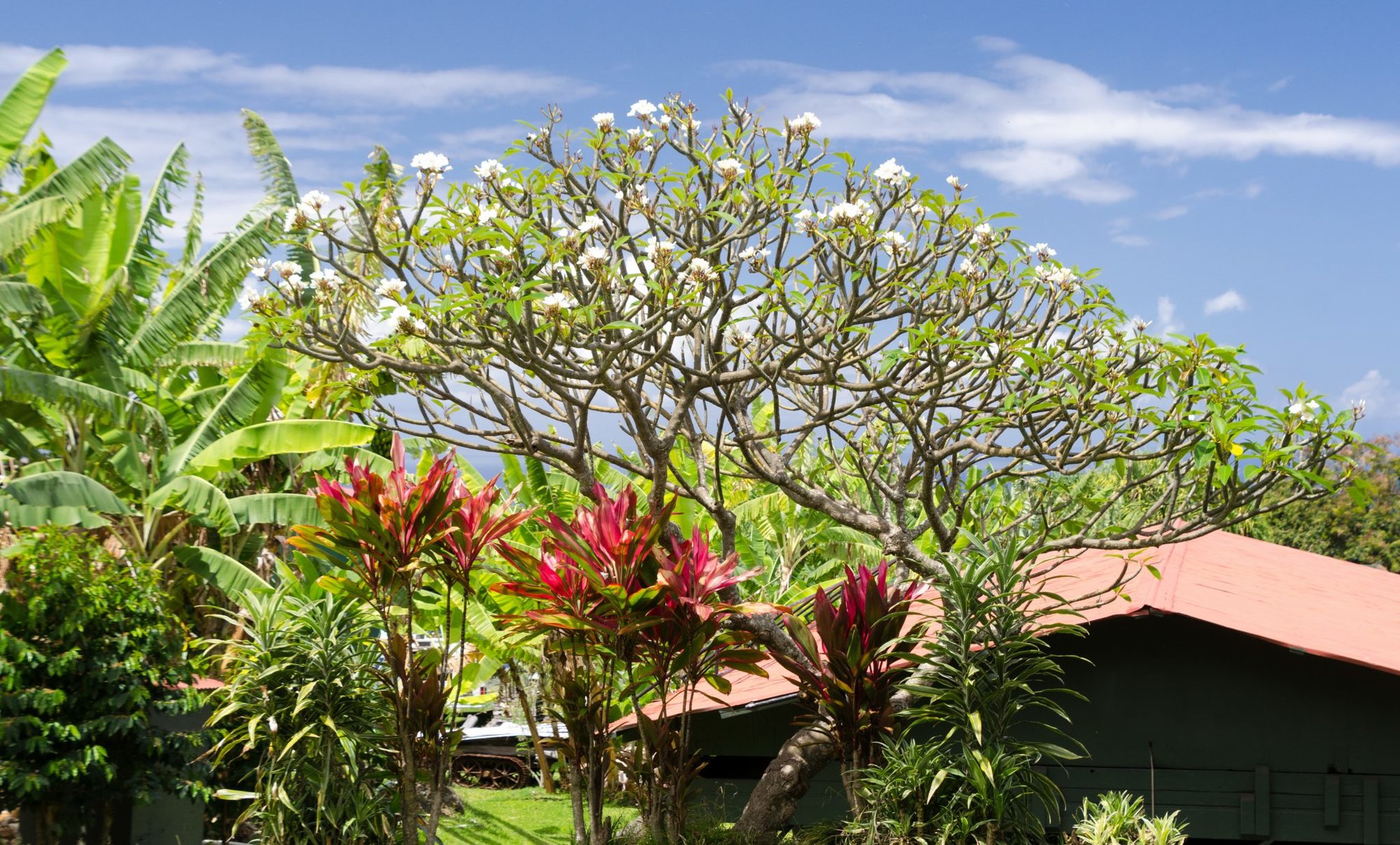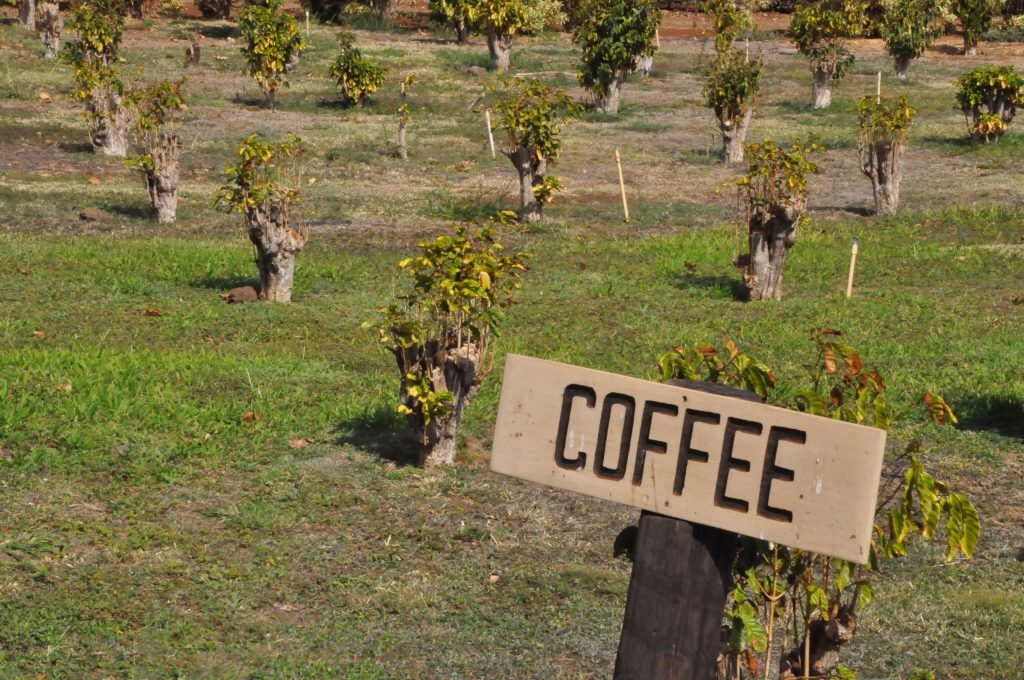
Coffee plantation on hills near Captain Cook, Big Island, Hawaii
When you ask someone what their favorite coffee is, most will reply with their favorite style. Some prefer lattes, some cold brew, and for the ones with a sweet tooth, perhaps a Frappuccino is their go-to pick. What most people cannot typically decipher is where the coffee beans that made the drink they’re enjoying are originally from. Coffee is not only a globally versatile drink; it’s a cultural touch point, but one whose taste highly depends on its origins.
The production of coffee can be temperamental, as coffee trees only flourish in tropical climates, with an even keel of both sunshine and water. High-altitude mountainous regions in Africa and Asia have been the most ideal environment for coffee farmers because of these factors, as well as in Brazil, which currently produces by far the most coffee in the world.
So, where does this leave the United States? America might be one of the top countries in terms of coffee consumption, but are Americans capable of growing and harvesting 100% American coffee themselves?
In short, the answer is yes.

Although their climates differ, there are a couple of places in the United States where coffee can be harvested: Hawaii and Puerto Rico.
May I offer you a “kope” Kona?
Many coffee enthusiasts know all about Kona coffee, one of the most expensive coffees on the market. It’s harvested in the North and South Kona Districts on the Big Island of Hawaii and undergoes meticulous methods of growing and processing, specifically during the late winter and early spring months when harvesting is at its prime. Because of Hawaii’s perfect climatic temperatures and fertile, volcanic soil, other areas within the tropical paradise have started to grow coffee plants commercially; it’s Hawaii’s second most valuable commodity, having passed cattle and macadamia nuts. Kona is only part of the story. Hawaii has more than 6,900 acres dedicated to coffee, and various Hawaiian brews can be found at national and global coffee competitions.
Come for the rum, stay for the coffee
They don’t call Puerto Rico the Island of Enchantment for nothing. Similar to Hawaii, Puerto Rico is also filled with warm, yearlong sunshine, perfect for harvesting and growing coffee. Although the Caribbean island is known for its rum production, the US territory is riddled with coffee plantations and at one point in time was among the top 10 coffee producers in the world. To date, there are a wide variety of coffee farms travelers can visit while on vacation, but due to a shortage in labor, the coffee industry isn’t as lucrative as it once was.

Experimental coffee in the US
Today, coffee connoisseurs are getting creative with more than just methods of brewing the perfect cup. Even in regions where the successful harvest of coffee is less than an ideal proposition, people are experimenting with growing the crop.
“While coffee generally grows between the Tropic of Cancer and Tropic of Capricorn, climate change, global warming, and greenhouse farming are slowly expanding coffee growing regions. Most recently stateside, California and Georgia started growing coffee experimentally,” said Jackie Newman, vice president at World of Coffee Inc.
Scott Augustine founded Yonah Coffee a few years ago in the hopes of creating the first-ever Georgia-grown coffee roast, and the first commercially grown US coffee outside of Hawaii. Although the endeavor is costly — Augustine has invested thousands of dollars in heated greenhouses to avoid the winter frost — there are Americans who would happily pay more for homegrown coffee, manufactured and produced right here in the United States.
Furthermore, California has also spiked an interest in coffee farming with an impressive 30 farms, notably scattered throughout the Santa Barbara and San Diego areas, resulting in more than 30,000 coffee trees within the Golden State.
[vimeo id=”328727816″ /]
There is one more slight loophole in whether or not coffee can be considered American.
Coffee or Die heard from Andrew Hetzel, a coffee expert who has been featured as a leading coffee commentator in the New York Times, Wall Street Journal, and Time magazine, on his thoughts regarding the origins of American coffee. He raises an interesting point:
“Farming is not the only significant point of origin. We must also consider two other production stages: roasting and brewing. By customs law, once green coffee is roasted, it is materially transformed sufficient for a new designation of origin. Green coffee from Mexico roasted in America becomes American roasted coffee by international law. American farmed coffee roasted in Mexico becomes Mexican roasted coffee. The transition happens again upon extraction and brewing. A Hawaiian coffee roasted in Mexico then brewed in Switzerland is a Swiss product. So, by this definition, it’s just the last step that makes any cup of coffee American.”
In short, coffee can absolutely be 100% American. Whether it is grown on the volcanic soils of the Kona coffee belt or harvested in a greenhouse in the middle of suburban America or roasted in a Black Rifle Coffee Company facility in Tennessee or Utah, one thing is for sure — coffee is a product of the world’s most diverse melting pot, and that’s what makes it so remarkable.

BRCC and Bad Moon Print Press team up for an exclusive, limited-edition T-shirt design!
BRCC partners with Team Room Design for an exclusive T-shirt release!
Thirty Seconds Out has partnered with BRCC for an exclusive shirt design invoking the God of Winter.
Lucas O'Hara of Grizzly Forge has teamed up with BRCC for a badass, exclusive Shirt Club T-shirt design featuring his most popular knife and tiomahawk.
Coffee or Die sits down with one of the graphic designers behind Black Rifle Coffee's signature look and vibe.
Biden will award the Medal of Honor to a Vietnam War Army helicopter pilot who risked his life to save a reconnaissance team from almost certain death.
Ever wonder how much Jack Mandaville would f*ck sh*t up if he went back in time? The American Revolution didn't even see him coming.
A nearly 200-year-old West Point time capsule that at first appeared to yield little more than dust contains hidden treasure, the US Military Academy said.












